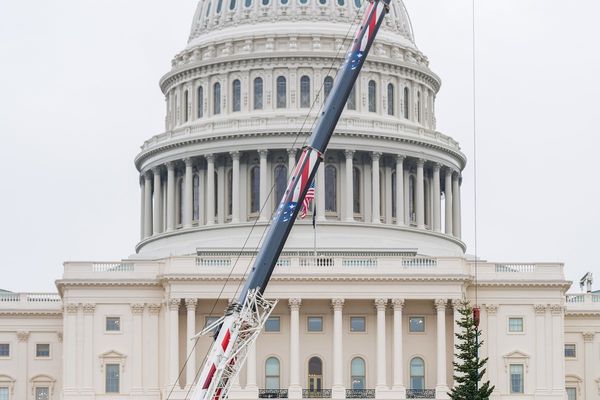Relentless, unforgiving, brutish? Oakmont, the host venue of this week’s US Open, tends to be all these things and more.
On the outskirts of the steel city of Pittsburgh lurks a formidable golfing beast that’s as uncompromising as a blast furnace. In its industrial heyday, Pittsburgh was also a hotbed of coal production.
Footage of golfers emerging from the withering embrace of Oakmont’s notoriously deep, ruthless rough over the past couple of days has been broadly equivalent to watching pit ponies blinking and gasping into the daylight after an exhausting shift down the mines.
“Last Monday felt impossible,” observed the Masters champion, Rory McIlroy, as he reflected on a reconnaissance mission to Oakmont last week. “I birdied the last two holes for 81. It felt pretty good.”
The greens, meanwhile, tend to be so quick it can be a bit like putting on the back of a soup spoon.
The stimpmeter, that simple contraption used for measuring green speeds, was devised back in 1935 after its inventor, Edward S Stimpson, watched the great Gene Sarazen putt a ball off the green during that year’s US Open. And yes, you’ve guessed it, Oakmont was the venue.
Sarazen himself had his own views on this mighty Pennsylvanian track. “Oakmont possesses all the charm of a sock to the head,” he said.
Keeping the heid while others are losing theirs will be a valuable attribute this week.
Oakmont’s course designer, Henry Clay Fowles, certainly wanted to create a fearsome stretch of golfing terrain. And he did.
"Let the clumsy, the spineless, the alibi artists stand aside, a poor shot should be a shot irrevocably lost," he stated. It sounds like he’d watched play unfold at the Association of Golf Writers’ spring meeting.
Back in 2007, Angel Cabrera won the US Open at Oakmont with a five-over aggregate. Almost a decade later, in 2016, Dustin Johnston triumphed with a hard-earned four-under total.
That was the year a young Scottie Scheffler made his major debut as an amateur. He narrowly missed the cut. Here in 2025, the 28-year-old is the dominant force in men’s golf.
“That was a tough pill to swallow, missing the cut by one,” reflected the world No 1. “But I played a practice round with Dustin and Brooks (Koepka) and I felt like I learned a lot from those guys at the time. It definitely made me excited to get out here (on tour) for real.”
With all its abundant challenges and hazards – there are 175 bunkers in total with the sprawling sandy expanse of the Church Pews its most famous trap – there’s no let-up in the remorseless Oakmont examination.
The eighth hole, for instance, is a par-3 that is set to be the longest in major history. “I promise you we’ll play it at 301 (yards) this year,” said John Bodenhamer, the USGA chief championships officer, with ghoulish glee.
“I'm going to try to hit the green, whether it's a 3-wood or driver from that back tee,” said Scheffler of his own approach. “Depends on wind direction but basically just going to try to get the ball on the green and two-putt.”
Damage limitation could be a watchword over the next few days. Jack Nicklaus, who won the first of his 18 majors at Oakmont in the 1962 US Open, recently suggested that the eighth hole was “crazy.”
He did add, with a wry chortle, that, “"I haven't played it since they lengthened it to be a short par five.”
Beasts, of course, can be tamed. Readers of a certain vintage will recall Johnny Miller’s barnstorming final round of 63 at Oakmont in 1973 which gave him the US Open title.
The only shot he leaked in that rousing charge was at the eighth. A few could be leaked there too this week.
“This is probably the hardest golf course that we'll play, maybe ever, and that's pretty much all it is,” added Scheffler of the general set up.
A US Open, by nature, tends to be the kind of attritional battle that should feature barbed wire, mortar rounds and trenches.
“You’re always aware of what a golf tournament here is going to be like,” said Jon Rahm, the 2021 US Open champion.
“A lot of unfortunate things are going to happen. It’s hard fairways to hit, bad lies, difficult bunkers, difficult greens. It's going to be a nice test, a difficult test. And I think one of the truest representations of what a US Open is all about.”
Let battle commence.







